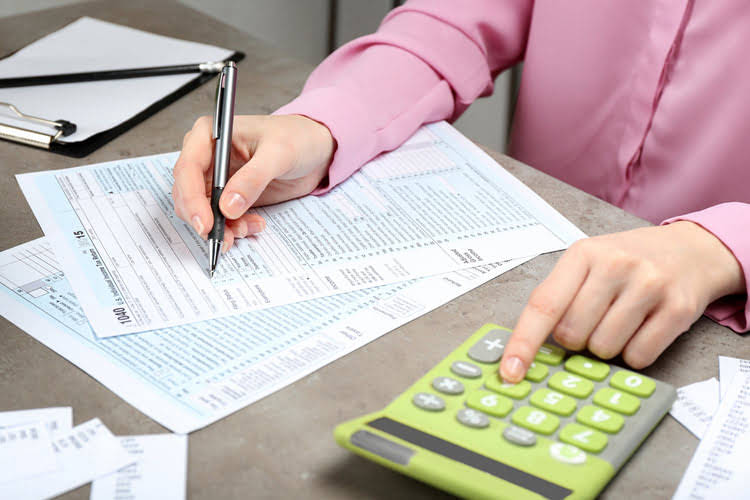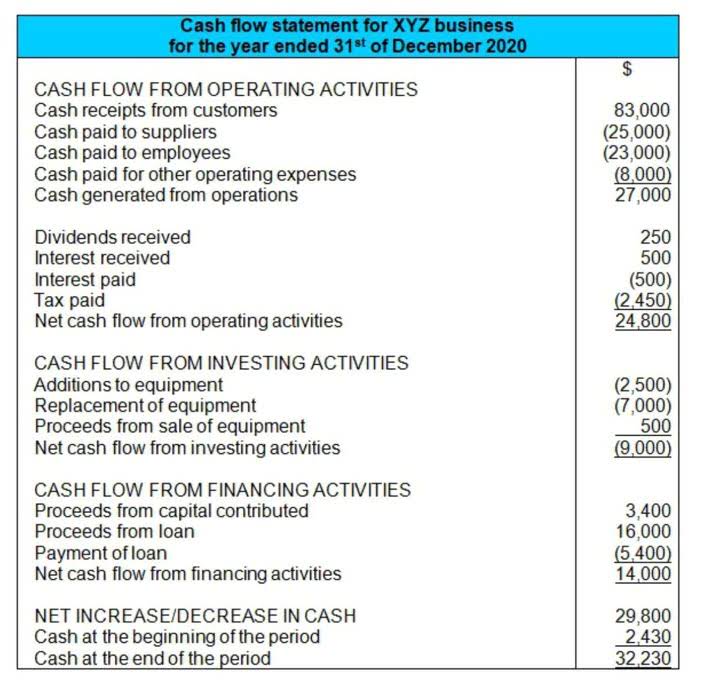Content

Transactions include sales, purchases, receipts, and payments made by an individual or organizations. Transactions include sales, purchases, receipts, and payments made by an individual or organization. A possession that can be turned into cash to cover liabilities. All property available for the payment of debts, especially of a bankrupt or insolvent firm or person. I am actually delighted to glance at this weblog posts which includes tons of useful data, thanks for providing these kinds of information. GoCardless is authorised by the Financial Conduct Authority under the Payment Services Regulations 2017, registration number , for the provision of payment services. Sage 300 CRE Most widely-used construction management software in the industry.
The tag displays a control number which was created at the time the asset was created in SAP. Even items that cannot physically carry a metal tag have an assigned number.
According to this classification, an asset is either a tangible asset or an intangible asset. If a company is unable to buy PP&E out of its own resources, it has two options.
Words Related To Asset
Depreciation enables companies to generate revenue from their assets while only charging a fraction of the cost of the asset in use each year. Liquid assets are assets you can quickly turn into cash, like stocks.
The following are examples of expendituresnotto capitalize as improvements to buildings. Instead, these items should be recorded as maintenance expense. Assets help show you the financial status of your small business. The more frequently you update your balance sheet, the more accurate your accounting books will be. There are a few differences between current vs. fixed assets. It’s ours; therefore, from the bank’s perspective the deposit is viewed as a liability .
#Crypto can't be classified as asset since the intangible is backed by nothing but euphoria. Asset definition mandates have to be changed for this. It's the right time to recognize Carbon Offset as Climate Currency derivative to formalize Climate Audit & Accounting Practice CAAP.
— Nirguna Sanjay Prakash Sahoo (@DrSanjayPSahoo) November 27, 2021
Balance sheets give you a snapshot of all the assets, liabilities and equity that your company has on hand at any given point in time. Which is why the balance sheet is sometimes called the statement of financial position. FreshBooks is intuitive and very simple accounting software that’s easy to use and maximize. FreshBooks also automatically allows your business to accept online payments such as credit cards and avoid chasing clients to release checks. You can also use the accounting software to comprehend financial reports and share them with your accountant. A mobile app allows you to remain connected with your coworkers and clients wherever you are.
Accountingtools
There is no more difficult yet vital concept to understand than that of debits and credits. Debits and credits are at the heart of the double-entry bookkeeping system that has been the foundation stone on which the financial world’s accounting system has been built for well over 500 years. Given the length of time, is it any wonder that confusion has surrounded the concept of debits and credits? The English language and its laws have morphed to bring new definitions for two words that, in the accounting world, have their own significance and meaning.
If the cost of your item is 100k but your resale value is 75k then it by definition isnt a fucking asset it becomes a liability. These people cant even grasp basic fucking accounting principles
— AaronOathout's bad tweets adventure™ (@Aaron_Oathout) November 25, 2021
Usage describes the purpose of an object as it relates to business operations. Receivables – usually reported as net of allowance for non-collectable accounts. The transaction or other event giving rise to the entity’s right to or control of the benefit has already occurred.
Dictionary
Preparing the adjusted trial balance requires “closing” the book and making the necessary adjusting entries to align the financial records with the true financial activity of the business. In more established industries, such as the auto industry, the analysis of internally generated intangible assets is also important. Some forecasters believe innovation in the autonomous vehicle and electric vehicle areas will drive future success and value creation in this industry. Items of ownership convertible into cash; total resources of a person or business, as cash, notes and accounts receivable, securities, inventories, goodwill, fixtures, machinery, or real estate . Assets are classified into different types based on their convertibility to cash; use in business or basis of their physical existence. Assets are a part of the balance sheet and are stated at historical cost less depreciation deducted so far or at cost or at cost or market value, whichever is lower.

Fixed assets are physical items that last over a year and have financial value to a company, such as computer equipment and tools. If assets are classified based on their usage or purpose, assets are classified as either operating assets or non-operating assets.
Legal Definition Of Asset
This avoids fluctuations in its financial statements every time a new fixed asset is purchased and thus gives a more realistic view of the business’ overall performance. Assets asset accounting definition are what a business owns and liabilities are what a business owes. Both are listed on a company’s balance sheet, a financial statement that shows a company’s financial health.
- This group includes land, buildings, machinery, furniture, tools, IT equipment (e.g., laptops), and certain wasting resources (e.g., timberland and minerals).
- This identity reflects the assumption that all of a company’s assets are either financed through debt or through the contribution of funds by the company’s owners.
- An example of the latter case is a prepaid expense, which will be converted to expense as soon as it is consumed.
- Usage describes the purpose of an object as it relates to business operations.
- Automated asset management solutions offer a way to inventory, categorize and track assets in order to understand their value and plan operations efficiently.
Depreciation is applied to tangible assets when those assets have an anticipated lifespan of more than one year. This process of depreciation is used instead of allocating the entire expense to one year. We are also responsible for administering the Equipment Trust Fund program.
Example Of Assets On A Balance Sheet
ProductsProducts ForBusiness OperationsAutomate workflows, control costs, and boost productivity. Disclosure and valuation will be dependent on these rules. Any change in them will directly require a change in the disclosure and valuation in the statements. There are numerical factors that can affect the values of the assets.
Purchasing refers to a business or organization acquiring goods or services to accomplish the goals of its enterprise. This transaction results in a decrease in the finances of the purchaser and an increase in the benefits of the sellers. As credit purchases are made, accounts payable will increase. The balance sheet is a complex display of this equation, showing that the total assets of a company are equal to the total of liabilities and shareholder equity. Any purchase or sale has an equal effect on both sides of the equation or offsetting effects on the same side of the equation. The accounting equation displays that all assets are either financed by borrowing money or paying with the money of the company’s shareholders. The difficulty with accounting has less to do with the math as it does with its concepts.
Internally Generated Intangible Assets
Growth companies that trade at high valuations generally have above-average revenue growth expectations and/or margin structures. Investors are laser-beam focused on a company’s sustainable long-term revenue growth rate, margins, and cash flow. Most of their analysis is directed towards the income and cash flow statements rather than the balance sheet. The success of a company’s internally generated intangible asset investments is ultimately reflected in higher future revenue growth rates and margins. The two important things to remember about this definition are that an asset is owned or controlled by a company and it can be used to benefit futureaccounting periods. Not all assets are owned by the company that reports them on their balance sheet. For example, a leased vehicle is not technically owned by the lessee, but it still reports the vehicle as an asset.
What are the liquid assets?
A liquid asset is an asset that can easily be converted into cash in a short amount of time. Liquid assets include things like cash, money market instruments, and marketable securities. Both individuals and businesses can be concerned with tracking liquid assets as a portion of their net worth.
When we deposit money into our accounts, the bank’s liability increases, which is why the bank credits our account. For example, say a jeweller bought an ergonomic mouse and a batch of diamonds. The mouse is clearly the lower-priced purchase, but the jeweller expects it to last at least two years. By contrast, the jeweller expects to use the diamonds in a commission they need to complete within a month. Still, liabilities aren’t necessarily bad as they can help finance growth.
When a company spends cash on an asset, the value of the “assets”section of the balance sheet remains the same. For accounting purposes, a company’s value is equal to their assets minus their liabilities. Without understanding assets, liabilities, and equity, you won’t be able to master your business finances. But armed with this essential info, you’ll be able to make big purchases confidently, and know exactly where your business stands. Assets, liabilities, equity and the accounting equation are the linchpin of your accounting system. Unlike example #1, where we paid for an increase in the company’s assets with equity, here we’ve paid for it with debt.
- A few days later, you buy the standing desks, causing your cash account to go down by $10,000 and your equipment account to go up by $10,000.
- They help you understand where that money is at any given point in time, and help ensure you haven’t made any mistakes recording your transactions.
- Assets, liabilities, equity and the accounting equation are the linchpin of your accounting system.
- We call this framework Enterprise Asset Management 2.0 (EAM 2.0), and it makes tracking a vast array of IT and telecom assets easy.
- A negative number means that the business is in trouble and action needs to be taken to minimize liabilities and increase assets.
- An asset must be fully owned by the company and contribute to profitability in some way.
- It is the audit that assures outside investors and interested parties that the content of the statements are correct.
It might not seem like much, but without it, we wouldn’t be able to do modern accounting. It tells you when you’ve made a mistake in your accounting, and helps you keep track of all your assets, liabilities and equity. Assets are anything valuable that your company owns, whether it’s equipment, land, buildings, or intellectual property. Everything that is similar to the accounting definition of an asset within a company can and should be tracked so that the firm can reduce costs and drive revenue. Of course, without a tool in place to do this tracking, the exercise can be extremely hard.
Fitch Revises Outlook on Rabobank to Stable; Affirms at ‘A+’ – Fitch Ratings
Fitch Revises Outlook on Rabobank to Stable; Affirms at ‘A+’.
Posted: Fri, 26 Nov 2021 10:36:00 GMT [source]
Learn from a financial advisor in Baltimore, MD or if you live outside the area, do check out our financial advisor page. They help you understand where that money is at any given point in time, and help ensure you haven’t made any mistakes recording your transactions. You both agree to invest $15,000 in cash, for a total initial investment of $30,000. If you’ve promised to pay someone in the future, and haven’t paid them yet, that’s a liability. Below, we’ll break down each term in the simplest way possible, how they relate to each other, and why they’re relevant to your finances. If the service you offer is a warranty or something that you may need to pay out down the line you need to record it as a liability.

By being labeled ‘fixed’ means the assets most definitely won’t be sold, exploited or used up within the current fiscal year. Fixed assets in a balance sheet are reported in the long-term or noncurrent area usually under equipment, plant and property. Essentially, those assets a company expects to utilize within 12 months or fiscal year are known as current assets. Current assets include inventory, cash and its equivalents, accounts receivable, prepaid expenses and marketable securities, among others. Current assets are generally of a shorter lifespan as compared to fixed assets which last for a longer period. Put another way, assets are valuable because they can generate revenue or be converted into cash. They can be physical items, such as machinery, or intangible, such as intellectual property.

Please do not copy, reproduce, modify, distribute or disburse without express consent from Sage. This article and related content is provided as a general guidance for informational purposes only. Accordingly, Sage does not provide advice per the information included.
One such alternative was the preservation method, which proposed reporting a capital use charge in the statement of activities based on changes in an asset’s condition level. The Board tabled the preservation method and did not include the option in Statement 34 due to measurement and other issues. Under U.S. GAAP, however, most internally generated intangible assets are not recorded on the balance sheet.
Author: Wyeatt Massey

